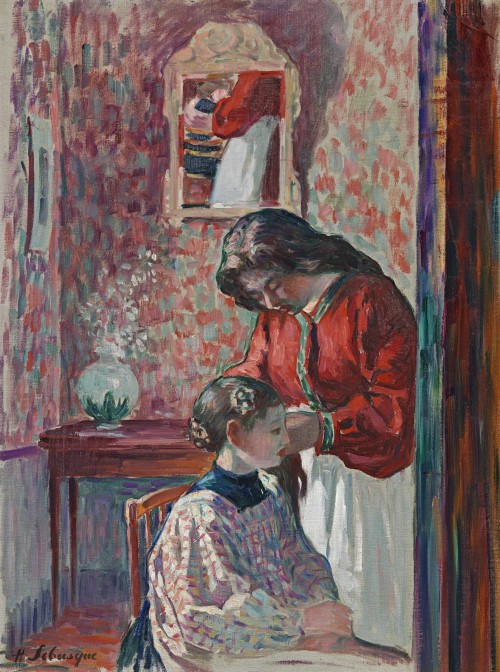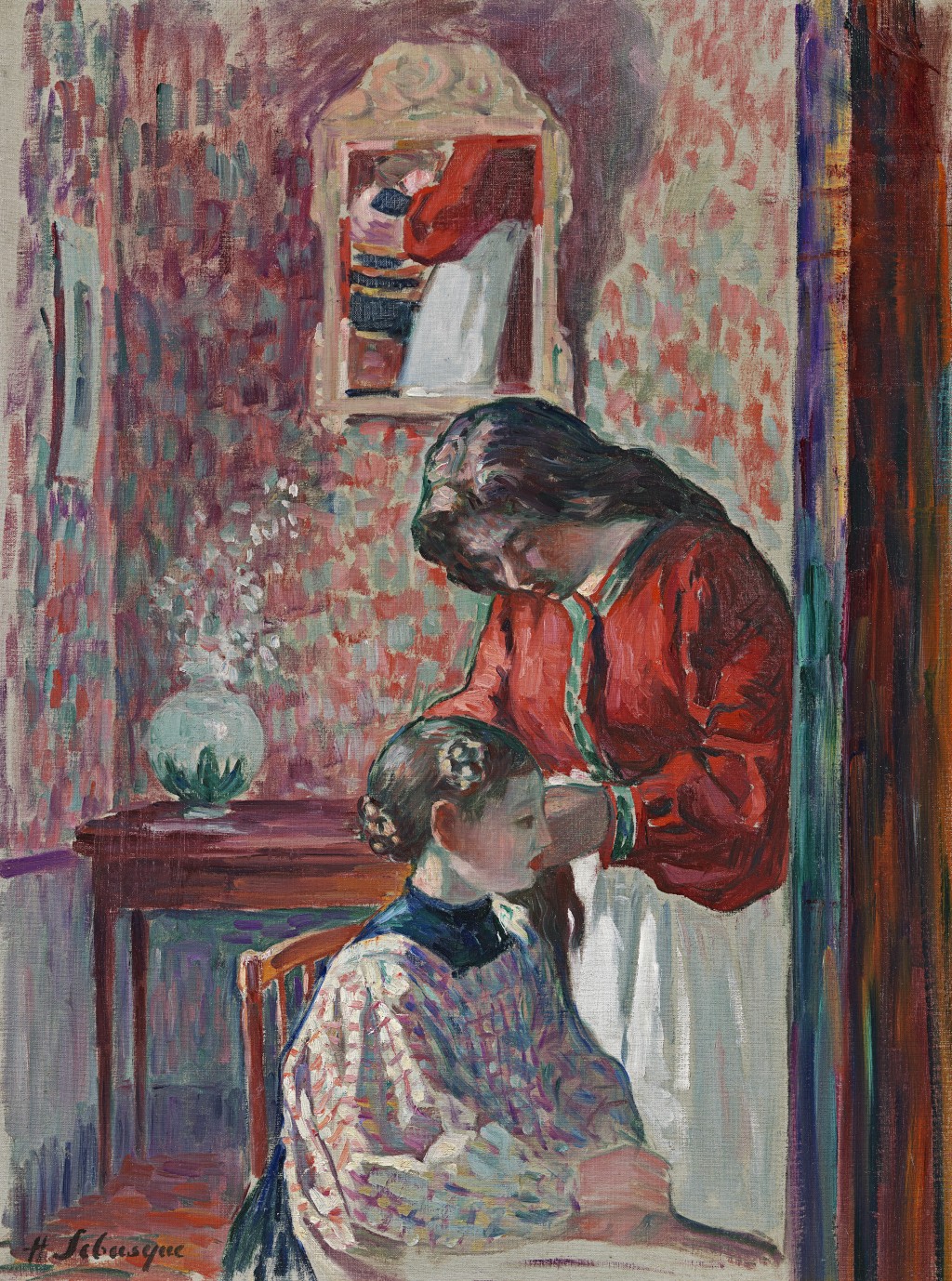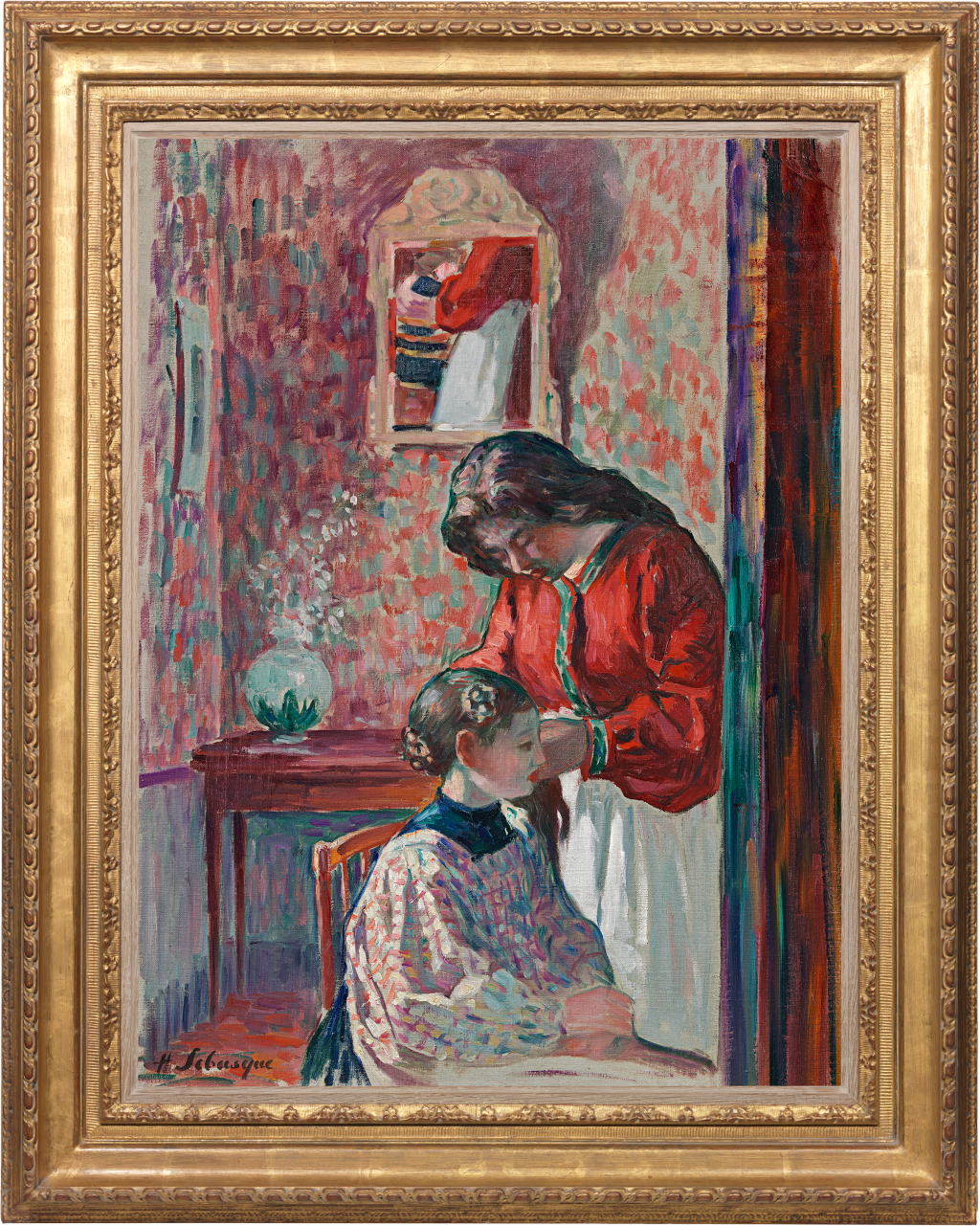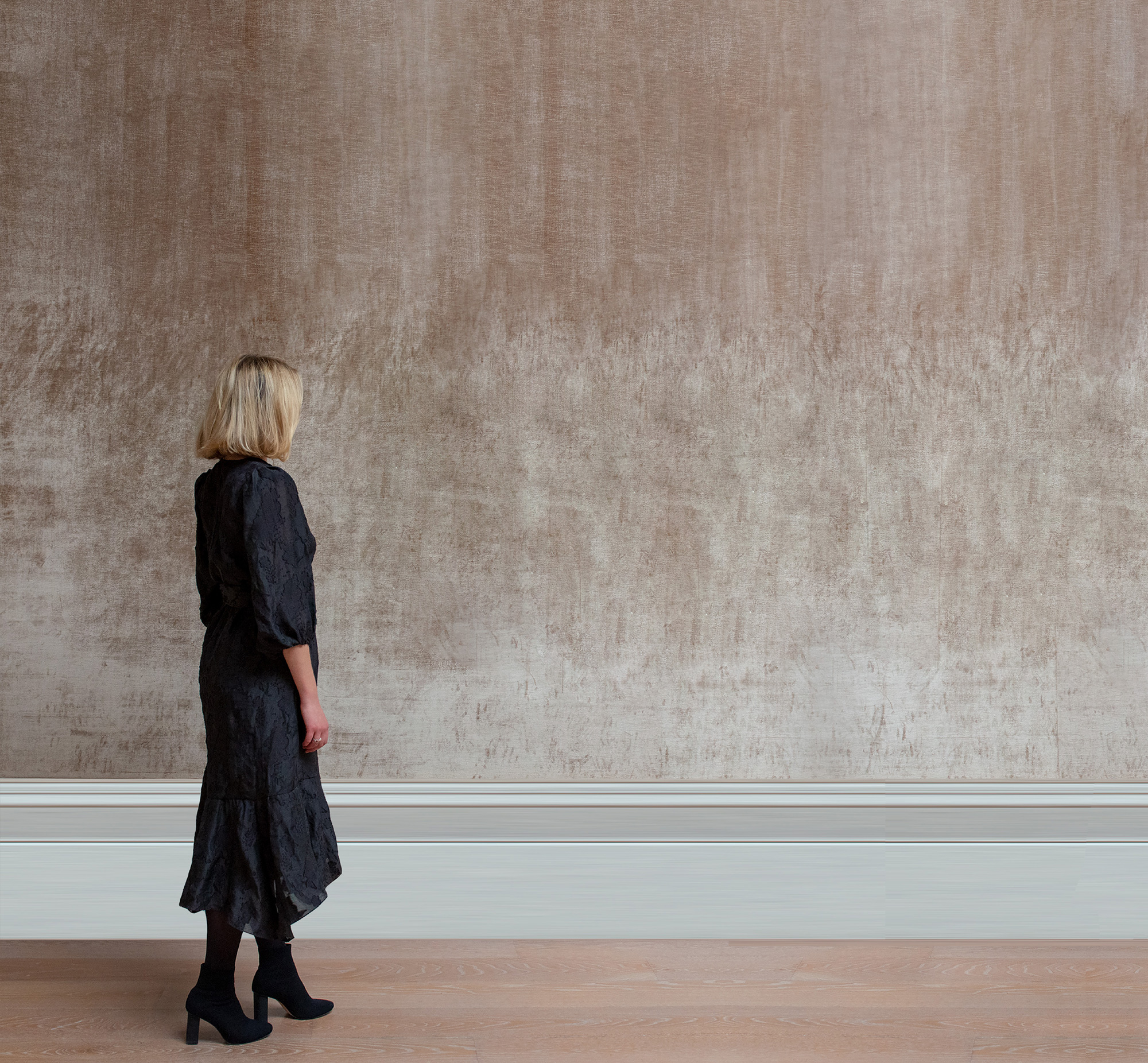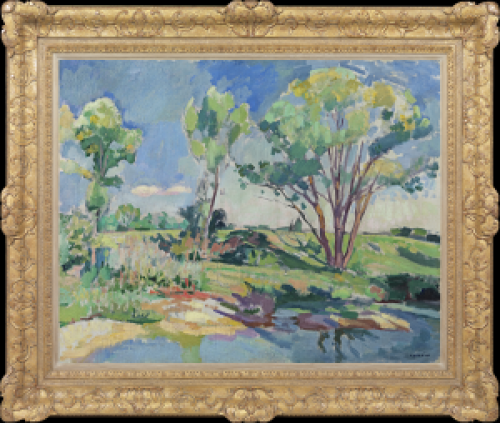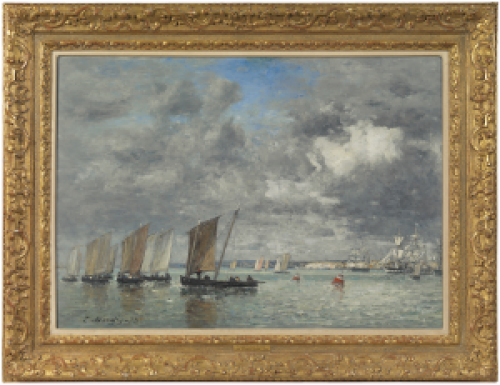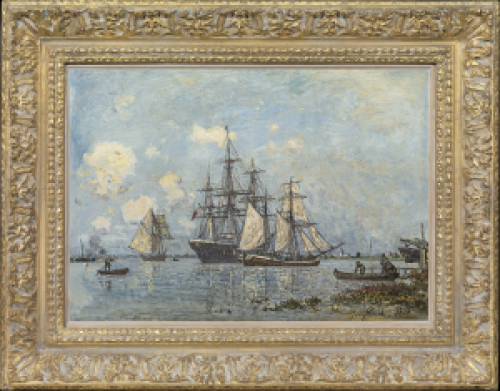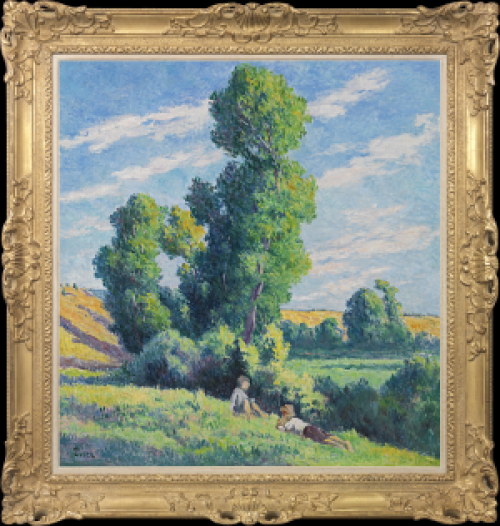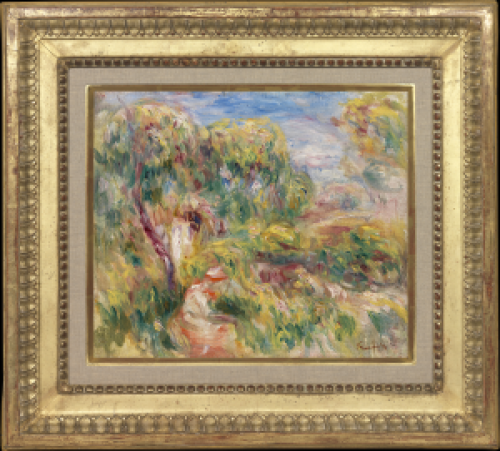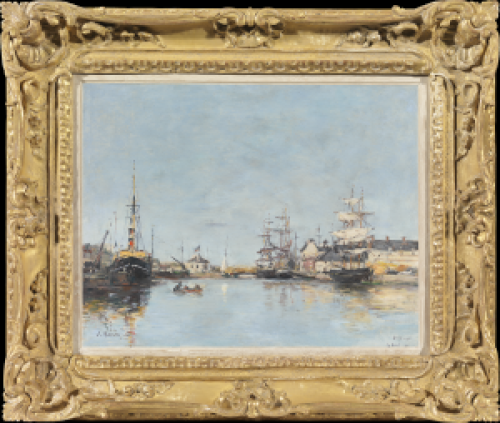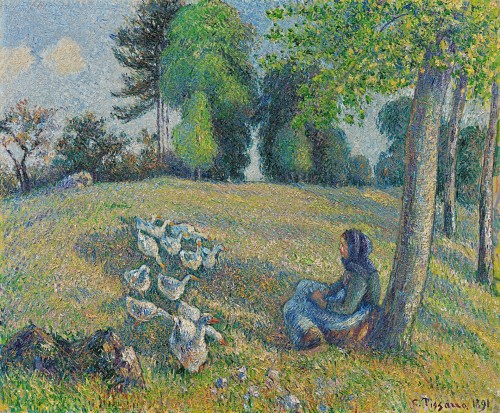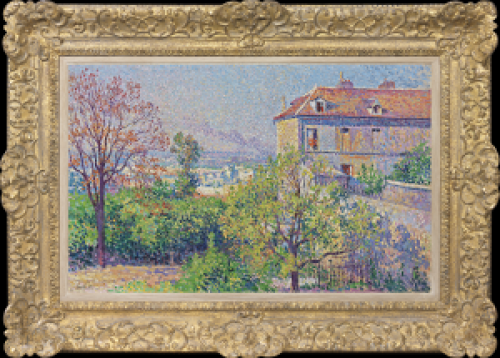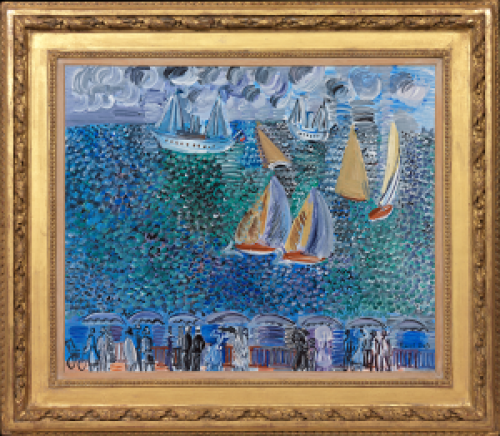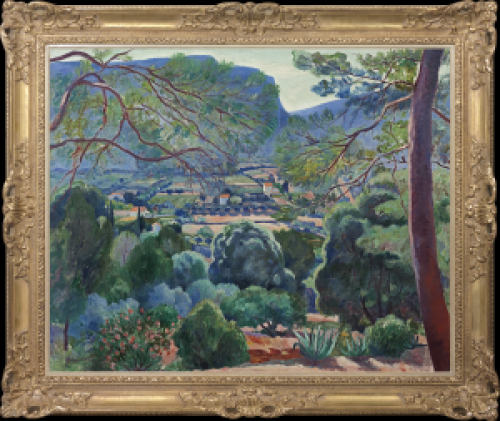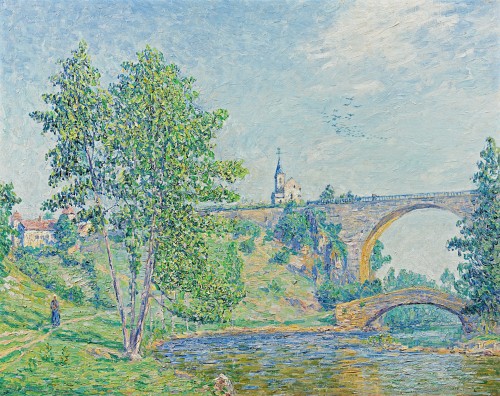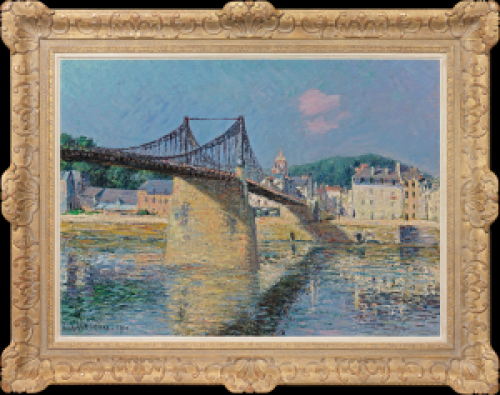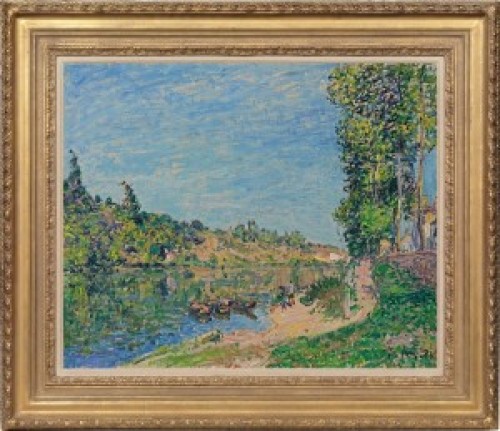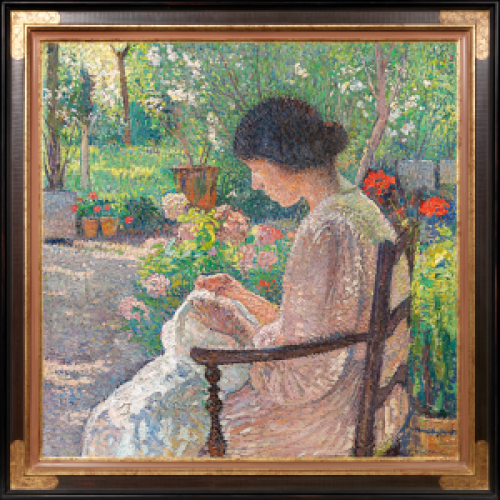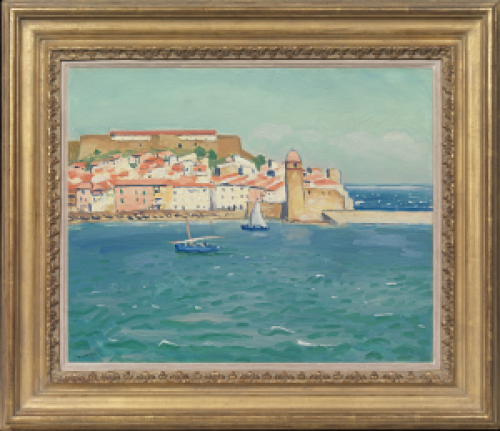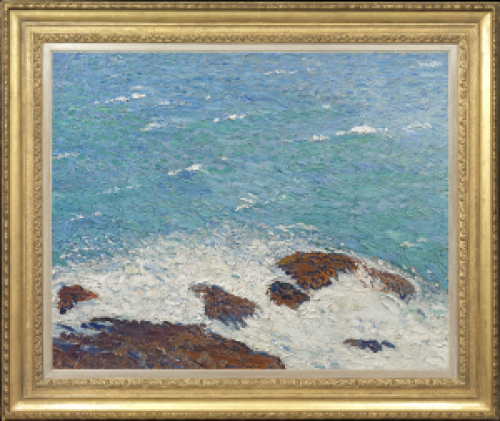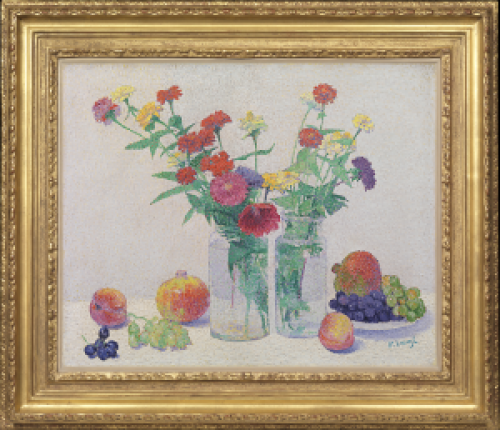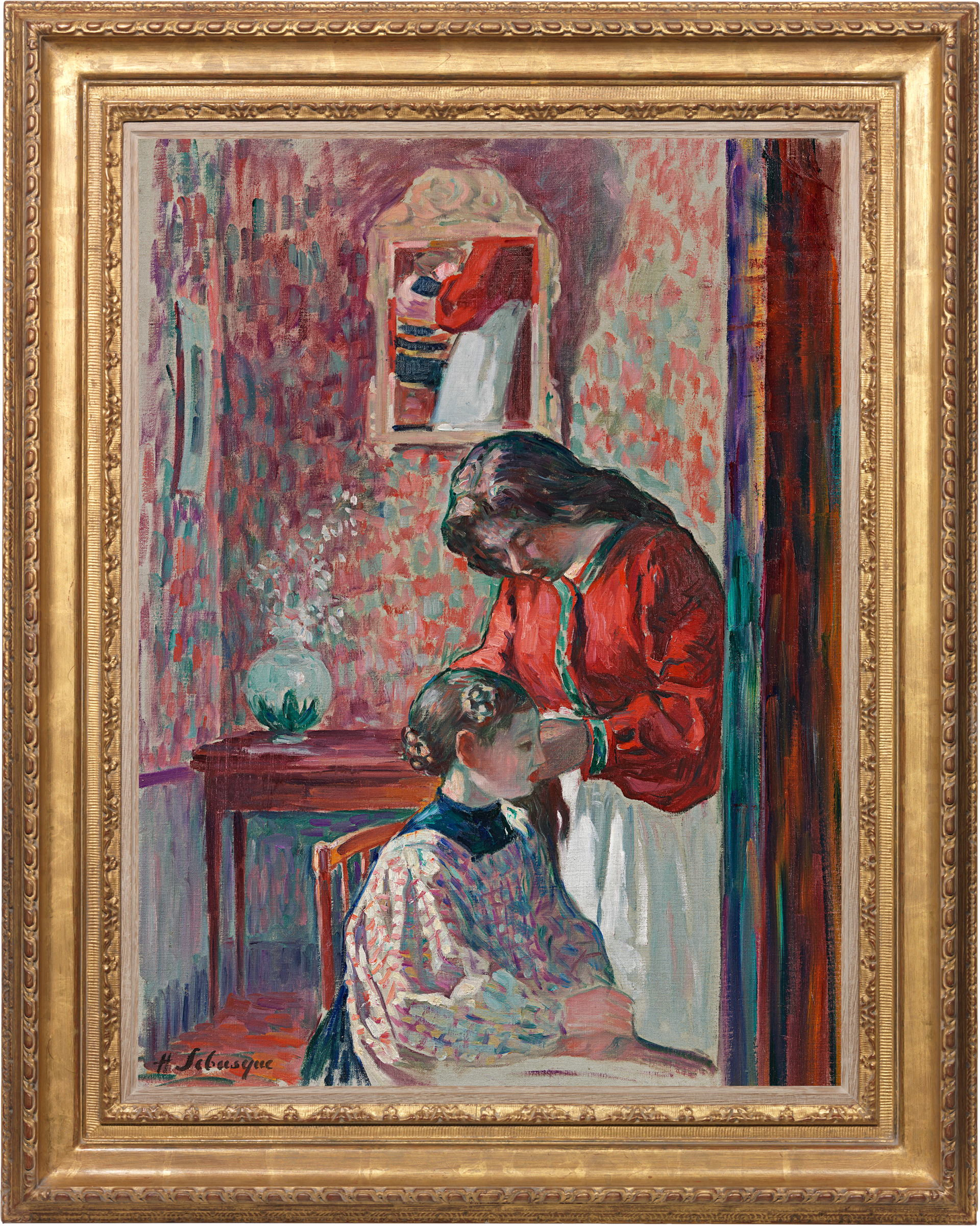HENRI LEBASQUE
Champigné 1865 - 1937 Le Cannet
Ref: CD 112
La coiffure
Signed lower left: Lebasque
Oil on canvas: 25 ½ x 19 ¼ in / 64.8 x 48.9 cm
Frame size: 33 x 26 in / 83.8 x 66 cm
Painted circa 1905-6
Provenance:
Galerie du Drap d’Or, Cannes;
from which acquired in 1971 by a private collection, London;
by descent
Literature:
Denise Bazetoux, Henri Lebasque, Catalogue raisonné, vol. I, Neuilly-sur-Marne 2008, p.189, no.655, illus.
Mme Christine Lenoir and Mme Maria de la Ville Fromoit have confirmed the authenticity of this work
Like his friends Edouard Vuillard and Pierre Bonnard, Henri Lebasque delighted in depicting domestic life. This painting shows his wife Ella dressing the hair of their eldest daughter Marthe. Trust and affection between mother and child is indicated by their facing profiles and the way in which Marthe’s patient, tranquil pose is sheltered within Ella’s comfortable form. This act of maternal care is obliquely echoed in the mirror which reflects Ella’s vivid, red sleeve and brilliant white apron. The door frame at the right keeps the viewer at bay, observing, but not intruding upon, this intimate moment. Lebasque often used the device of looking into a room beyond that in which the artist is standing, as did Bonnard in his explorations of bourgeois domestic life.
Although the scene is peaceful, Lebasque’s palette is vibrant and daring. Ella’s cherry-red blouse dominates and is picked up in the pattern of the wallpaper and the carpet. It is complemented by a range of greens, from the deep sea-green of the trim on Ella’s blouse and the light catching the door frame, to the eau-de-nil of the wallpaper and the round vase. Purple shadows gather on the door frame and in the darkened corner of the room behind the mirror.
Lebasque had learned from Georges Seurat the theory of complementary colours, the way in which opposing hues fire off each other. He also followed the Intimisme of Vuillard in flooding the composition with patterns, juxtaposing the rapidly-brushed, staccato checked fabric of Marthe’s dress with a broader approach to the red-green pattern on the wall. Every part of this painting intrigues the eye; every part breathes domestic happiness.
Another, smaller version of this composition was recorded in a London private collection[1].
HENRI LEBASQUE
Champigné 1865 - 1937 Le Cannet
Hailed by critics and artists alike as ‘the painter of the good life’, Henri Lebasque was acclaimed for his individuality, his delicate sense of light and his personal charm. Such were the qualities that prompted Beaunier to write: ‘Lebasque merits the renown of a lovely original artist, who knows his calling, uses it well, and never abuses it’ (Gazette des Beaux Arts, May 1908, p.366).
Born in Champigné in the Loire valley, the son of a wood merchant, Lebasque went to Paris in 1885 and studied at the Ecole des Beaux Arts. He then entered the atelier of the portraitist Léon Bonnat and began to exhibit at the annual art society exhibitions and the Paris Salons. He later assisted Ferdinand Humbert with the decorative murals of the Panthéon.
Lebasque’s vision was coloured by his contact with younger painters, especially Vuillard and Bonnard, founders of the Nabis group and Intimists who favoured the calm and quietude of domestic subject matter. From his acquaintance with Seurat and Signac, Lebasque learnt the significance of a colour theory which stressed the use of complementary colours in shading.
Lebasque was a founding member of the Salon d’Automne in 1903 with his friend Matisse. Two years later a group of artists exhibited there who included Rouault, Derain, Vuillard, Manguin and Matisse. They were dubbed ‘Les Fauves’ for their stylistic ‘savagery’. The critic Vauxcelles noted that Lebasque’s talent arrived ‘in the midst of the roaring of the unchained beasts’. Like Les Fauves, Lebasque adopted a similar flattening of the picture plane, but blended with a sophisticated, subtle fluidity. He painted domestic scenes with his family as models, still lifes, landscapes, portraits and nudes.
From 1900 to 1906 Lebasque lived at partly at Lagny on the Marne, but also visited Paris, London and Venice. He was enchanted by the light of the Midi on a trip to St Tropez in 1906 and spent many summers in the south of France. During the First World War, Lebasque was a war artist. He exhibited in America from 1916 and from 1918 was represented by Galeries Georges Petit. In 1924 Lebasque moved to Le Cannet on the French Riviera, where he shared a model with his friend and neighbour Bonnard. He died in Le Cannet on 6th August 1937.
The work of Henri Lebasque is represented in the Louvre, Paris; the Musée d’Orsay, Paris; the Musée d’Angers; the Fine Arts Museums of San Francisco, CA; the Fogg Art Museum, Harvard University, Cambridge, MA; the Nelson-Atkins Museum, Kansas City, MO; the National Museum of Western Art, Tokyo; the Statens Museum for Kunst, Copenhagen and the Thyssen-Bornemisza Museum, Madrid.
[1] Denise Bazetoux, op. cit., p.189, no.654, illus.

